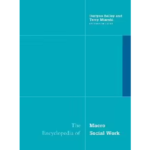Limited-Equity Cooperatives
For more than a hundred years, limited-equity cooperatives (LECs) (also referred to as “shared-equity cooperatives”) have provided an affordable housing option for low- to moderate-income people. Today, ECs are an underutilized tool for housing developers and others who want to deal with the growing economic and housing crisis in the United States and other markets across the world. A better knowledge of the advantages of using LECs may be of value in promoting a resurgence in the use of this method as a mainstay against sometimes inadequate housing conditions for poor and working-class people.
What Are Limited-Equity Cooperatives?
LECs attempt to keep housing prices and options manageable for a certain segment of the population. Simply put, LECs are like condominiums for the “underclass”: that is, low- to moderate-income people are able to buy or opt-in to being homeowners, but in a limited way. By pricing LECs in an affordable manner and by restricting the amount of profit that can be taken out of the unit, the dream of homeownership is realized. However, the amount of money that could be made on rising housing prices, particularly in a speculative market, is capped. Although it can vary, the typical amount of profit that can be made is usually between 5% and 10% per year. Any additional profit that is part of rising housing prices is kept within the LEC, thus keeping the buy-in for the next person lower and theoretically more affordable.
Of course, this implies an inflationary housing market, Today, with many deflationary housing markets across the United States and other parts of the world, this model may not work as well. However the impact of decreasing housing prices plays out in the private market, in the nonprofit world of the LECs, the implications are different. At the very least, people’s liability against falling housing prices is limited just as their ability to profit in an inflationary housing market is limited. Although those living in LECs might see their investment devalued (that is, the price of their unit or share in the LEC could decline), because they are unlikely to move anyway—those taking advantage of LECs are not in it to make money—the effect should be smaller.
For a housing entity to be an LEC, it must meet certain criteria. Among those are cooperative ownership (that is, each member of the LEC owns a share of the cooperative), democratic participation in the management of the co-op, and an income level below a certain amount. Each LEC has a set of bylaws that govern the way the housing entity operates. The housing may be newly developed or rehabbed. Ideally, there is a sense of community that develops among those living in the co-op. Thus, LECs are a form of shared housing; however, not all forms of shared housing are LECs.
History of LECs
LECs have a long history, dating back to the late 19th century. The first of these types of organizations was started in New York City, which is appropriate given that about half of all U.S. housing co-ops, limited as well as full equity, are there today. After World War 1, there was an initial spurt in the
Page 1
| Limited-Equity Cooperatives|
development of the co-op movement, which stalled and failed during the Great Depression. Another spurt occurred after World War I, first without federal subsidies, then with them. During the 1970s, federal support for co-ops ended, and the movement essentially stopped. The condominium craze began at around the same time, and housing co-ops, with few exceptions, were left in the dark.
There are approximately about 500,000 LECs across the country. These units are organized into more than 6,000 various kinds of housing cooperatives, There are more than 750,000 market rate cooperatives, which comprise about 1.25 million units. That is roughly 1% of the total housing market. Other than New York, major cities that have appreciable housing co- ops include Boston, Chicago, Atlanta, Miami, Washington, DC, Minneapolis, and San Francisco.
Advantages of LECs
Living in an LEC provides affordable housing not only to the present low- to moderate-income owner, but also to future generations. Regardless of how high housing market prices rise, the co-op unit will probably remain affordable for generations to come.
LECs should also provide lower monthly costs for their homeowners because LECs tend to have a larger asset reserve than most market-rate housing options. Since co-op boards approve any incoming members and can evict troublesome members, resident home-owners theoretically should be safer living in LECs. Moreover, LECs can target certain populations: seniors, pregnant mothers, people with disabilities, and even, theoretically, the homeless. Finally, LECs should have a positive impact on the neighborhoods they are built in because they create homeowners, which help stabilize marginal city neighborhoods and even reduce crime in those areas.
Other Forms of Housing Cooperatives
LECs can be contrasted with other forms of cooperative housing—mainly full-equity cooperatives (also known as market-rate cooperatives) and no-equity cooperatives (also known as zero-rate or leasing cooperatives). There are also several hybrid forms of cooperative housing available, such as mutual housing.
The cooperative form most known to the American public is the market rate cooperative. A market rate cooperative allows homeowner-members to keep all the equity or profit made on the sale of the unit or share and places few if any, restrictions on who can buy the co-op. This is the free market at work and allows someone to maximize their profit on their investment. As a result, people’s fortunes (or failures) can rest on these kinds of investment decisions.
The leasing cooperative, on the other hand, is very much like a rental apartment situation but with certain differences. Because a member of a leasing co-op has no ownership in it, he or she has fewer restrictions, rules, and hassles with it: no worries about equity, no worries about participating in the governance of the entity, and no worries about maintenance or repairs to the unit or building.
Mutual housing consists of nonprofit associations, but their boards are not limited to the members of the housing co-op and include community representation. Although associations often live in the properties for which they are responsible, they often lease their units to tenants, who, as a result, do not derive the benefits of homeownership.
LEC Networking
The trade association for LECs, if it can be considered one, is the National Association of Housing Cooperatives {NAHC). Located in Washington, DC, it is a nonprofit formed more than 50 years ago. The only entity of its kind, NAHC provides an umbrella for all housing cooperatives across the country. Serving as a clearinghouse and information center for the nation’s housing cooperative movement, it has many members across the United States.
There are several other resource groups for housing cooperatives. WeOwn.net focuses on various ownership models for housing co-ops as well as issues concerning the self-governance of the co-ops, The University of Wisconsin Center for Cooperatives has an extensive resources page. The Urban Homesteading Assistance Board (UHAB), located in New York City, has been around for decades, preserving homeownership for tens of thousands of New Yorkers. The DC Cooperative Housing Coalition plays a similar role in that city, Last, PolicyLink offers a wealth of information and technical assistance in the area of housing cooperatives.
Examples
One better-known example of an LEC is Penn South in New York City. It began in the early 1960s, and.
Page 2
| Limited-Equity Cooperatives|
there are over 2,800 units in the development. Each member of the co-op has a vote in the affairs of the LEC, based on the historic “one unit, one vote” notion of the early cooperative movement from the days of Rochdale in the 1840s. Twice, the co-op members have had to turn out in large numbers to vote on preserving Penn South as an LEC, and now, its status is secure through the early 2020s.
Another example is the cluster of more than 30 cooperatives in Yolo and Davis Counties in California. The outstanding LEC example here is the Dos Pinos Housing Cooperative, with 60 units of affordable housing that date back to 1985, It caters to a wide range of people, including families and seniors. A seven-person board of directors governs the organization, but it does get assistance from professional managers and a number of committees made up of members and owners have been established to keep the co-op running smoothly.
Another interesting example is Logan Square Cooperative in Chicago. A very small LEC with only eight units, it has a Facebook page. It began in 2001 with the collective purchase of a building that included one-, two-, and three-bedroom units and housed 11 adults and three children, Perhaps the most interesting thing about this LEC is that it was made possible by borrowing more than $500,000 from the Chicago Community Loan Fund.
Conclusion
Given the most recent housing crisis, the rise of foreclosures, and the vast need for affordable housing in the United States, the limited-equity cooperative model may serve as a good model for the future. Previous housing crises gave the initial impetus for the development of this model, and today’s housing issues present yet another opportunity to push this model forward and to help low- to moderate-income people become or remain homeowners.
Steven Soifer
See also Affordability; Cooperative Housing; First-Time Home Buyer; Housing Trust Funds; Mutual Housing; Nonprofit Housing; Self-Help Housing; Shared-Equity Homeownership; Social Housing
Further Readings
Coalition for Nonprofit Housing 8¢ Economic Development, (2004, Spring). A study of limited-equity cooperatives in the District of Columbia. Washington, DC: Author.
Kennedy, D. (2002), The limited equity coop as a vehicle for affordable housing in a race and class divided society, Harvard Law Revie, 46(1), 85-125.
Lewis, T., & Higgins, L. R. (2004, October), The advantages and disadvantages of cooperative housing as an affordable alternative. Draft paper prepared for NCB Development Corporation, Arlington, VA.
Micelli, T, J., Sazama, G. W., & Sirmans, C. . (1994). The role of limited-equity cooperatives in providing affordable housing. Housing Policy Debate, 5, 469-430.
Northcountry Cooperative Development Fund. (n.d.). Housing cooperatives: An accessible and lasting tool for home ownership. Minneapolis, MN: Author.
Perkins, X. L. (2007). The future of limited equity cooperatives. Cornell Real Estate Revie, 1-5,
Saegert, S. (2006). Building civic capacity in urban neighborhoods: An empirically grounded anatomy. Journal of Urban Affairs, 28, 275-294.
Saegert, S., & Benitez, L. (2003). Limited equity cooperatives: A review of the literature {City University of New York Graduate Center). New York, NY: “Faconic Foundation.
Sazama, G. (2000). Lessons from the history of affordable housing cooperatives in the United States: A case study in American affordable housing policy. American Journal of Economics. and Sociology, 59, 573-608,
Sazama, G., & Willcox, R. (1995). An evaluation of limited equity housing cooperatives in the United States. Storrs: University of Connecticut, Center for Real Estate and Urban Economic Studies.
Urban Institute, (2010, October). Shared equity homeownership evaluation: Case study of Dos Pinos Housing Cooperative: Final report. Washington, DC: Author. Retrieved from http:/fwww.urban.org/
uploadedpdf/412238-dos-pinos.pdf










Limited-equity cooperatives are explored succinctly. Vital primer for understanding the unique dynamics of shared ownership in housing communities.